Gyeongju Day Trip from Busan: Must-See Sights & Cultural Landmarks
Gyeongju, known as “the museum without walls,” is a historic city in South Korea with a rich cultural heritage and ancient landmarks. Once the capital of the Silla Kingdom, Gyeongju is home to UNESCO World Heritage sites like Bulguksa Temple, Tumuli Park, and Cheomseongdae Observatory. If you’re interested in Korean history and culture, Gyeongju is a must-visit destination. Just a short trip from Busan, it’s ideal for a day trip or weekend escape.
Looking to dive into Korean history in one day? Take a short trip from Busan to Gyeongju, filled with ancient temples, royal tombs, and beautiful sights—perfect for history enthusiasts
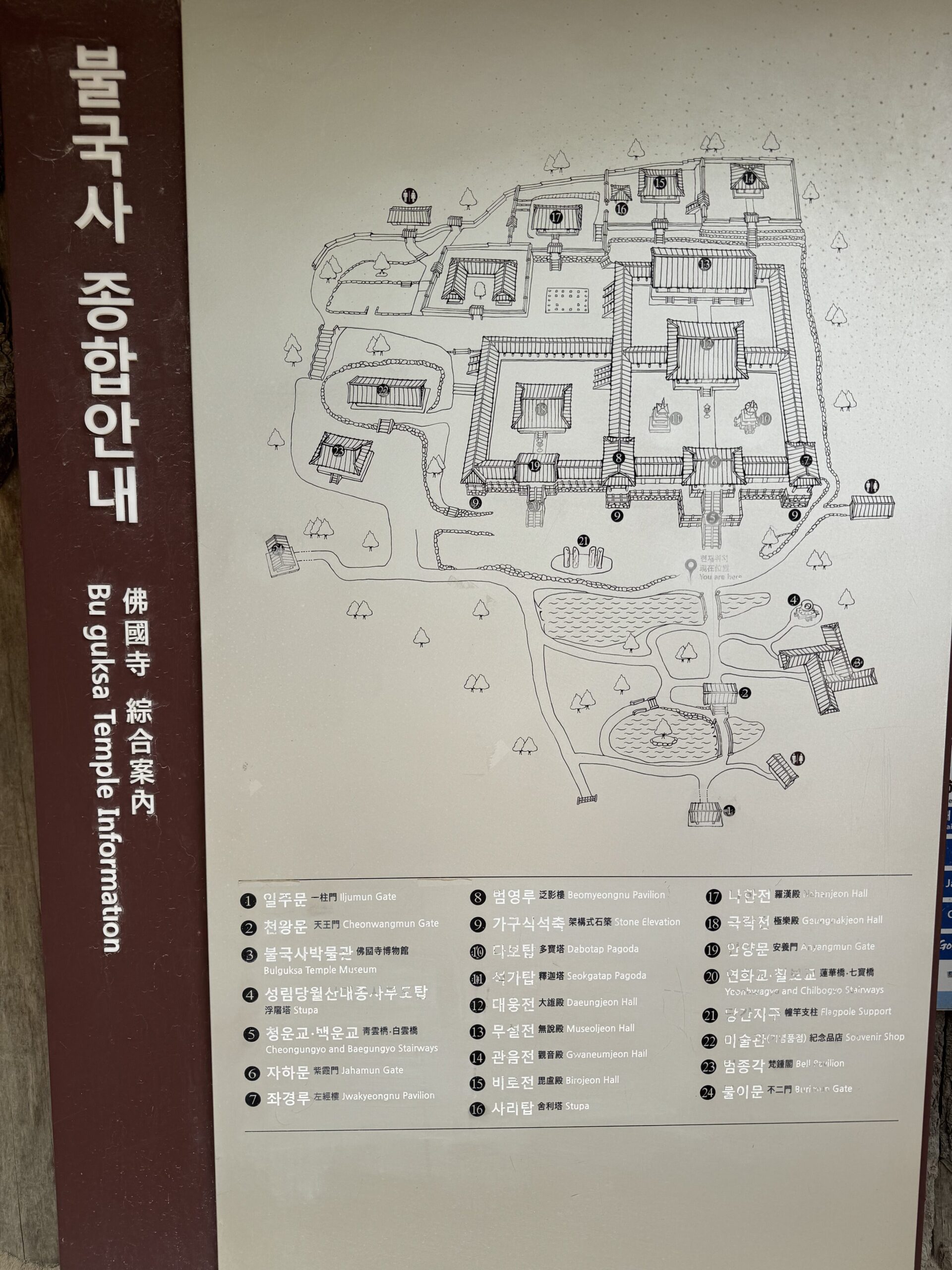
First Stop: Bulguksa Temple (UNESCO Site)
Begin your Gyeongju day trip with a visit to Bulguksa Temple, one of Korea’s most famous Buddhist temples and a UNESCO World Heritage Site. The temple is peaceful, beautiful, and full of history.
- Geungnakjeon Hall – Look for the golden pig statue, said to bring good luck when rubbed.
- Nahanjeon Hall – A quiet place for peaceful reflection.
- Birojeon Hall – Located near an ancient stone pagoda that was once taken to Japan and returned.
- Gwaneumjeon Hall – Climb the stairs for a stunning view and a peaceful moment.
The temple grounds are serene and scenic, making it an ideal spot for photos, nature walks, and experiencing Korean culture.
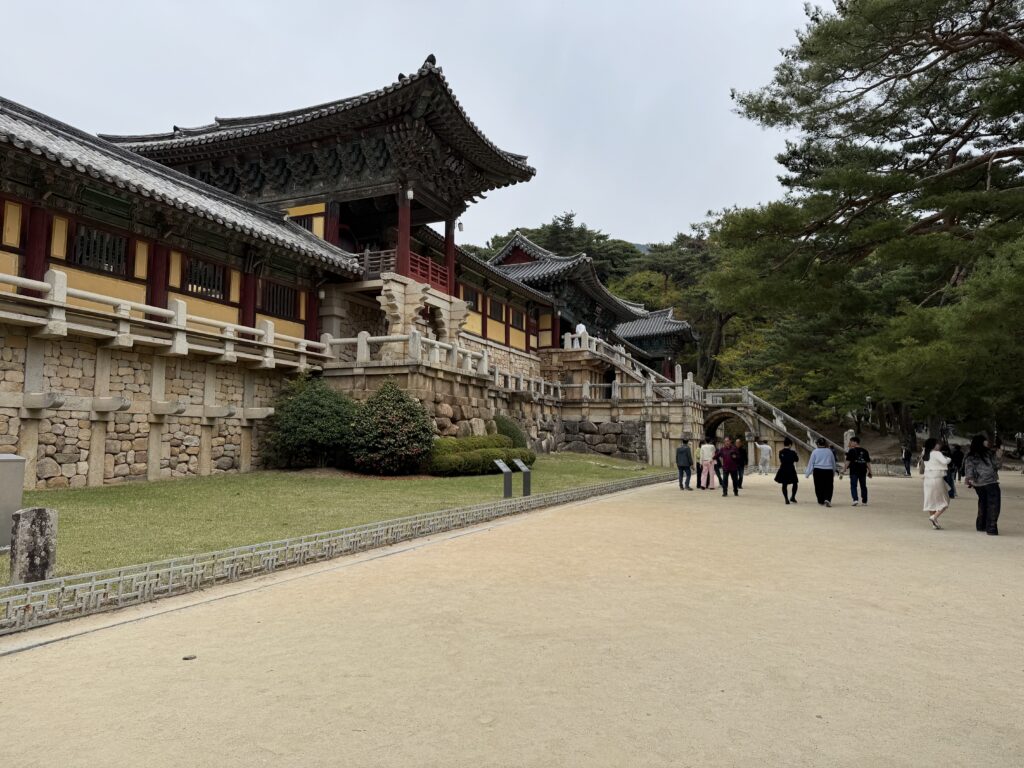
Dabotap Pagoda
Dabotap Pagoda, located at Bulguksa Temple in Gyeongju, South Korea, is a must-see historical site. Built in the 8th century, this beautiful pagoda is famous for its detailed stone design and represents the teachings of Buddha. Bulguksa Temple, home to Dabotap Pagoda, attracts many visitors who want to explore Korea’s spiritual heritage and admire its ancient craftsmanship.
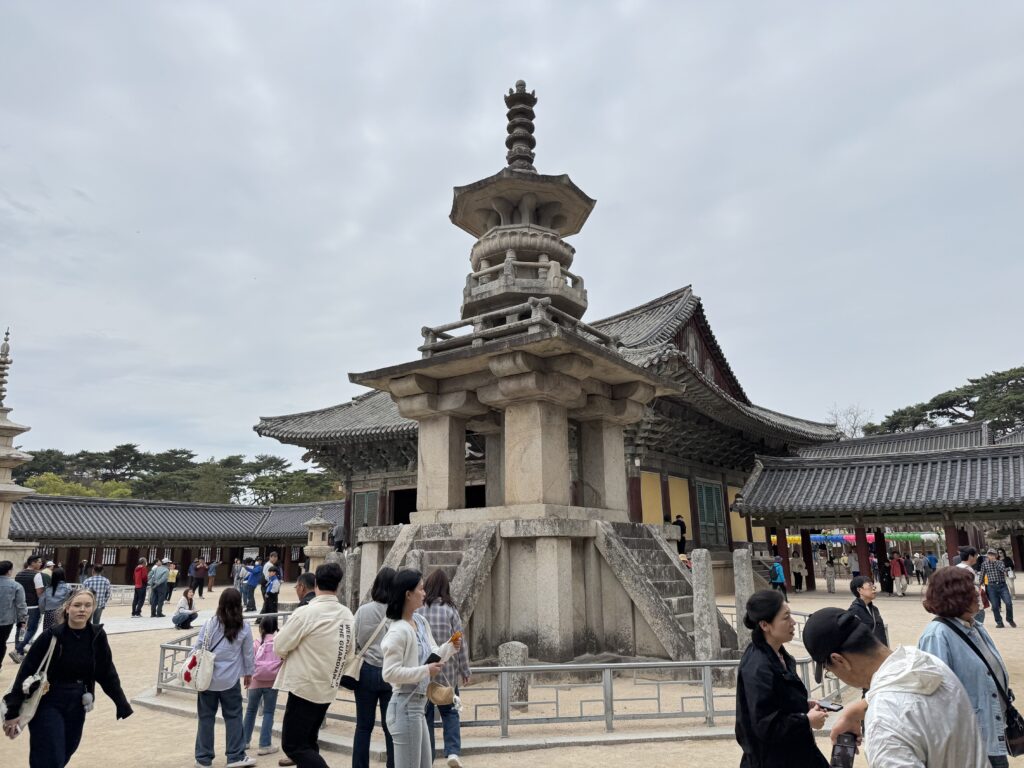
Geungnakjeon Hall
Geungnakjeon Hall is a key highlight at Bulguksa Temple in Gyeongju. Known for its peaceful atmosphere, it’s dedicated to Amitabha Buddha and represents the Western Paradise in Buddhism. The hall’s stunning design and spiritual significance make it a must-see when visiting Bulguksa Temple.
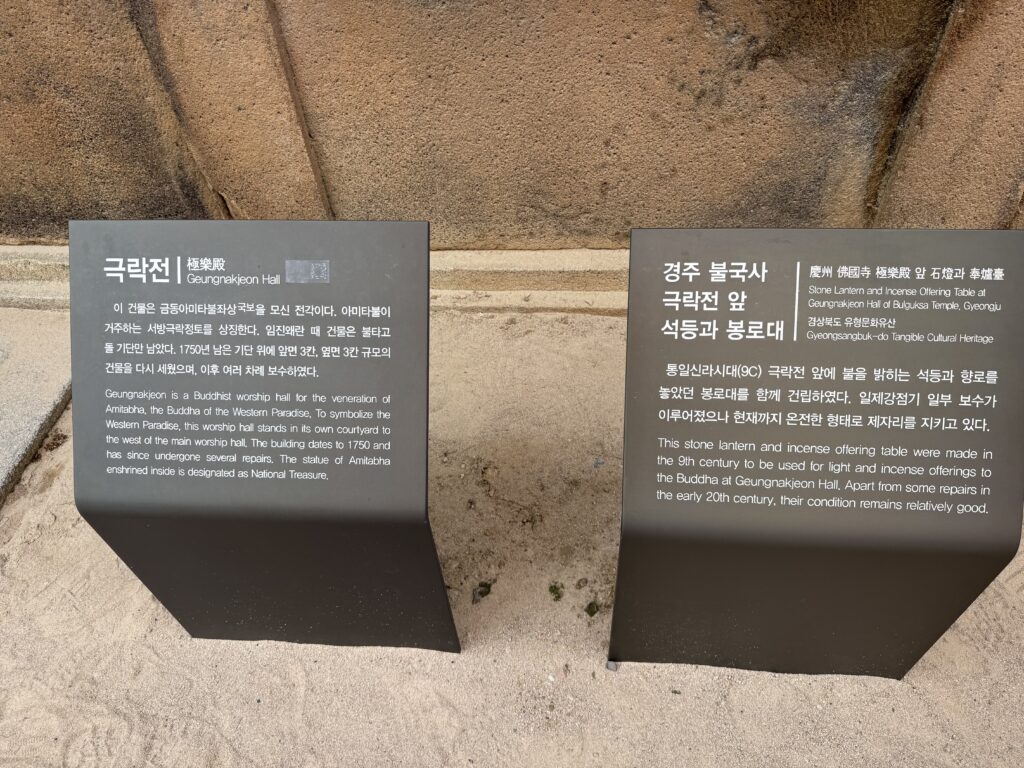
Golden Pig Statue
In front of Geungnakjeon Hall, you’ll find a golden pig statue, thought to bring good luck. According to local tradition, rubbing the pig is believed to attract wealth and prosperity. Many visitors make sure to touch the statue, hoping to receive a blessing of good fortune during their visit.

Daeungjeon Hall
Daeungjeon Hall at Bulguksa Temple in Gyeongju, South Korea, is the main hall of the temple. Known as the “Great Enlightenment Hall,” it houses a large Buddha statue that represents enlightenment. Built during the Silla Dynasty, the hall features traditional Korean architecture with intricate wooden carvings and a tiled roof. Today, Bulguksa Temple is an important religious site and a key symbol of Korea’s rich Buddhist history and culture.
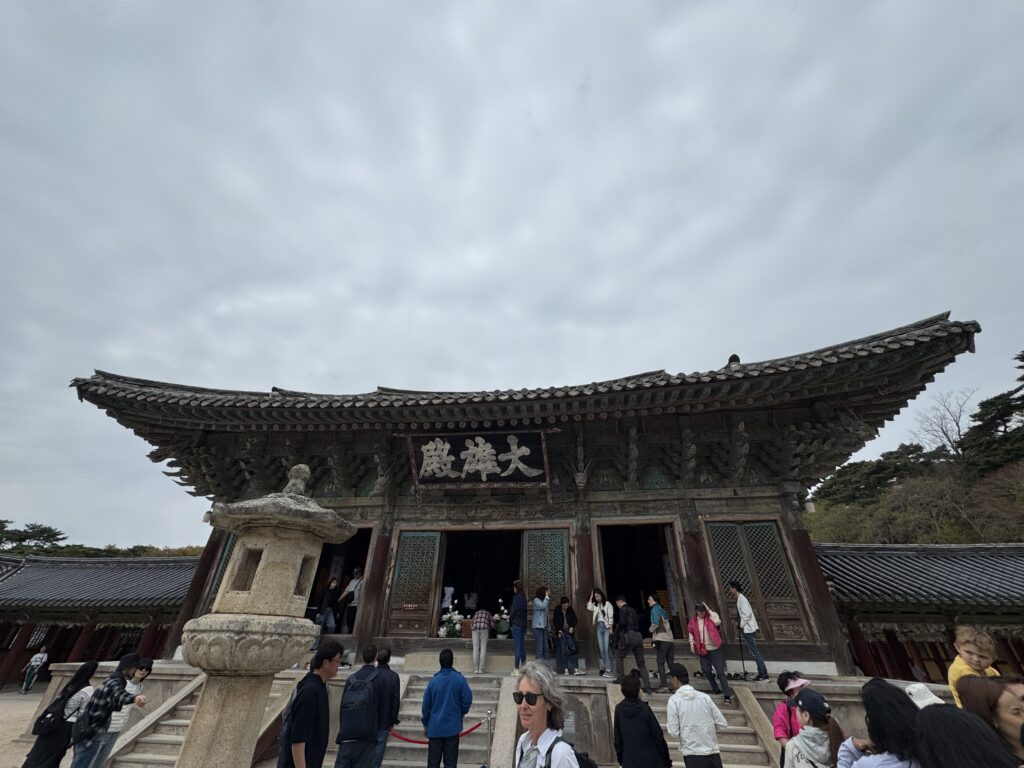
Nahanjeon hall
Nahanjeon Hall at Bulguksa Temple in Gyeongju, South Korea, is a peaceful place dedicated to Arhats, the enlightened disciples of Buddha. This hall features statues of these important figures, each with unique expressions and poses. Nahanjeon showcases the rich Buddhist traditions of the Silla Dynasty and enhances the temple’s calm, historic vibe. It’s a must-visit spot for those looking to experience both cultural beauty and spiritual peace./

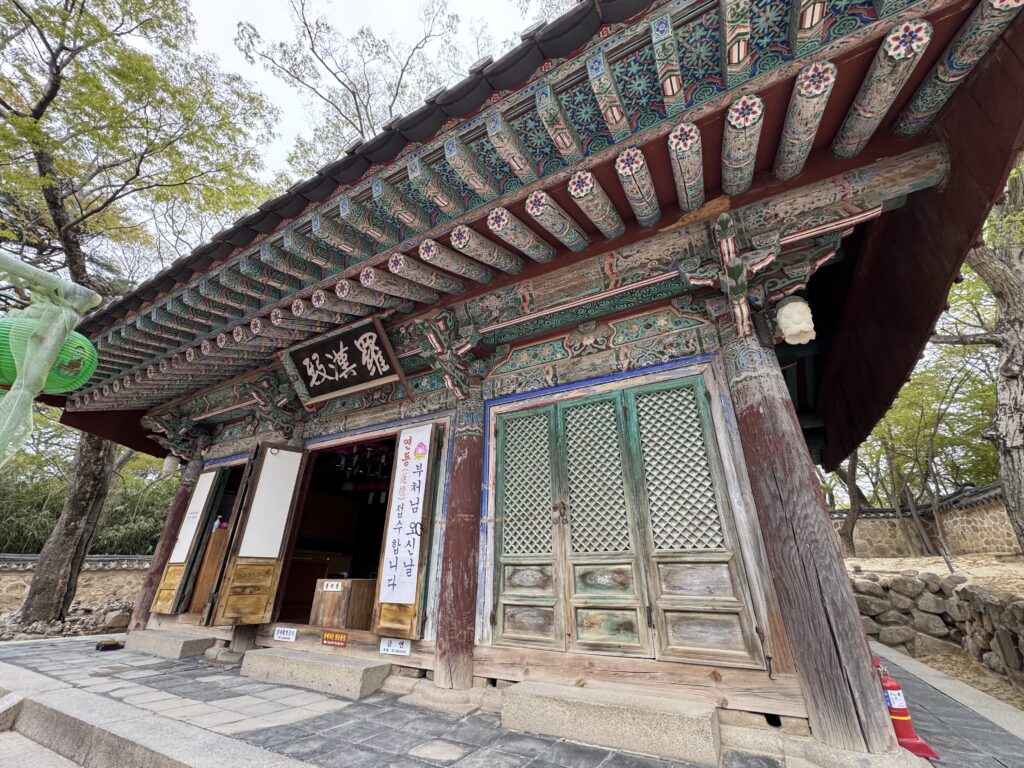

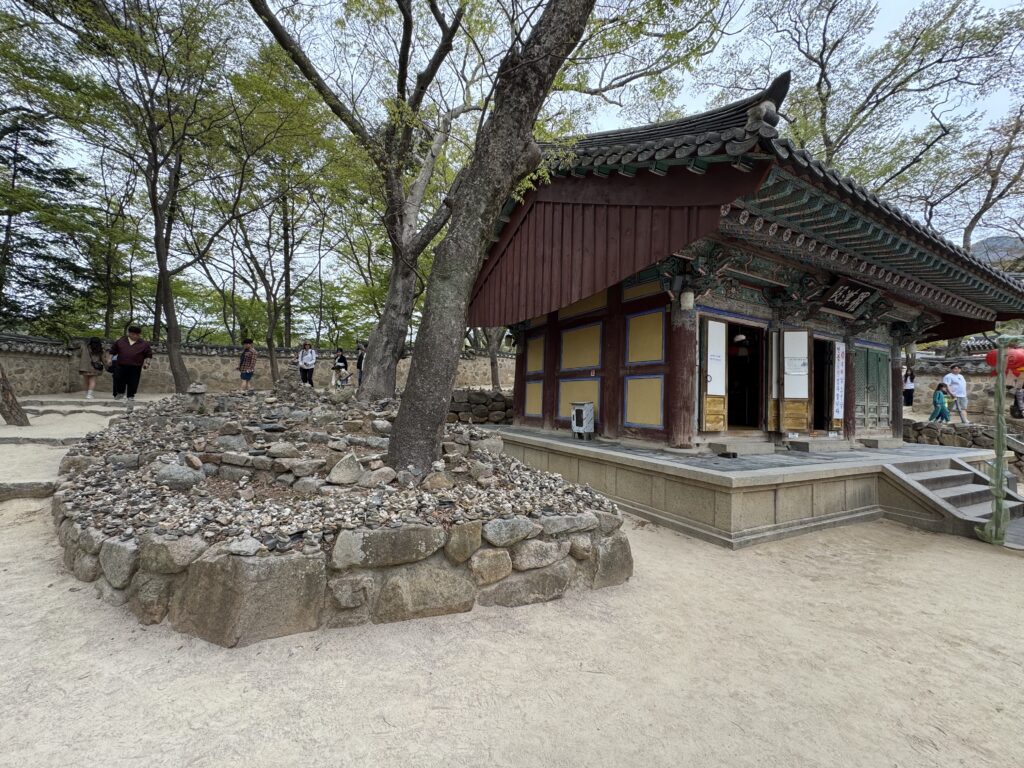
Birojeon hall
Birojeon Hall, located inside Bulguksa Temple in Gyeongju, South Korea, is a peaceful place dedicated to Birojana Buddha, symbolizing enlightenment and truth. Smaller and quieter than the main halls, Birojeon offers a calm atmosphere where visitors can enjoy the simple beauty of Silla-era architecture and feel the centuries-old spiritual devotion. It’s a perfect spot for reflection, providing a peaceful escape within the grand Bulguksa Temple.
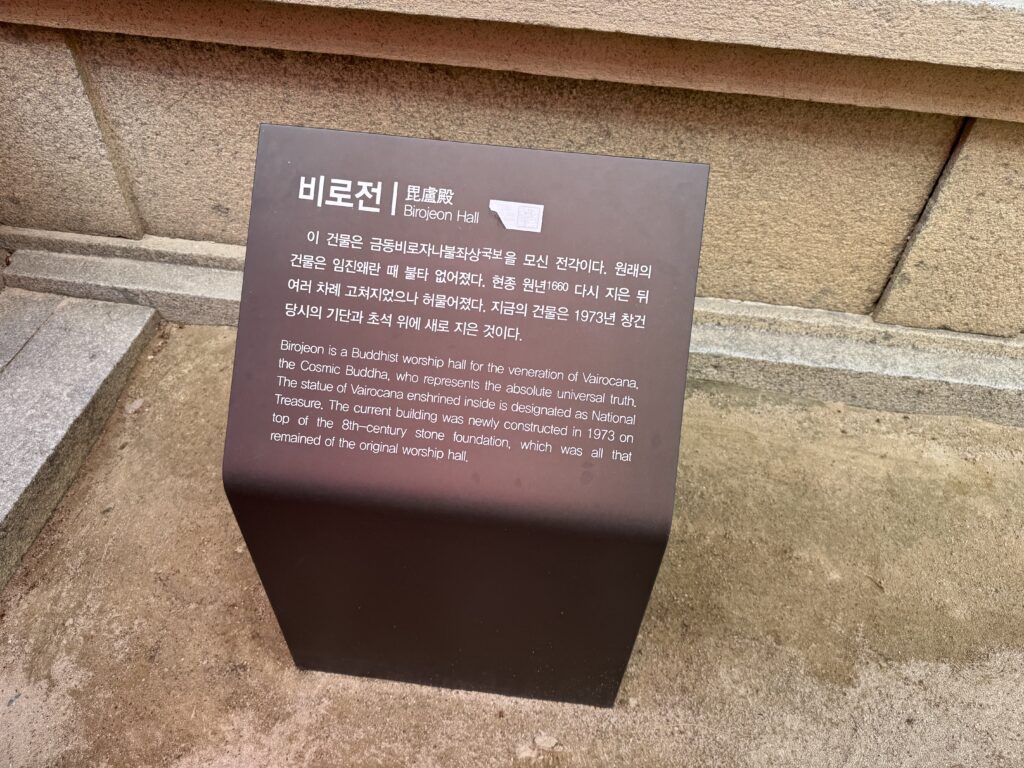
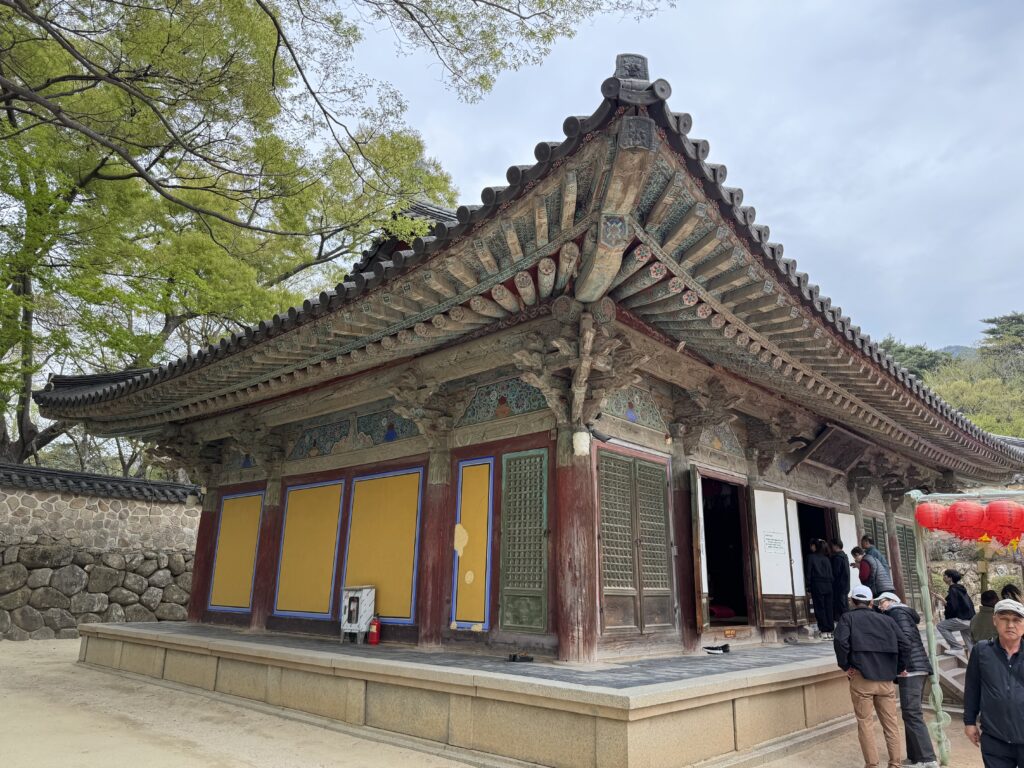
Stupa
Next to Birojeon Hall, you’ll find a stupa with great historical importance. During the Japanese occupation of Korea (1910–1945), the stupa was taken to Japan, marking a difficult time in Korea’s history. It was later returned, and now it serves as a strong symbol of Korea’s Buddhist heritage and the resilience of its culture.

Gwaneumjeon Hall
Gwaneumjeon Hall is a key part of Bulguksa Temple in Gyeongju, South Korea. Dedicated to Gwaneum, the Bodhisattva of Compassion, this hall is reached by climbing a tall set of stone stairs. The climb represents a spiritual journey, and once at the top, visitors are greeted with a peaceful atmosphere and beautiful architecture. Gwaneumjeon is a calm and sacred place where many come to reflect, pray, and appreciate the artistry of ancient Korea.

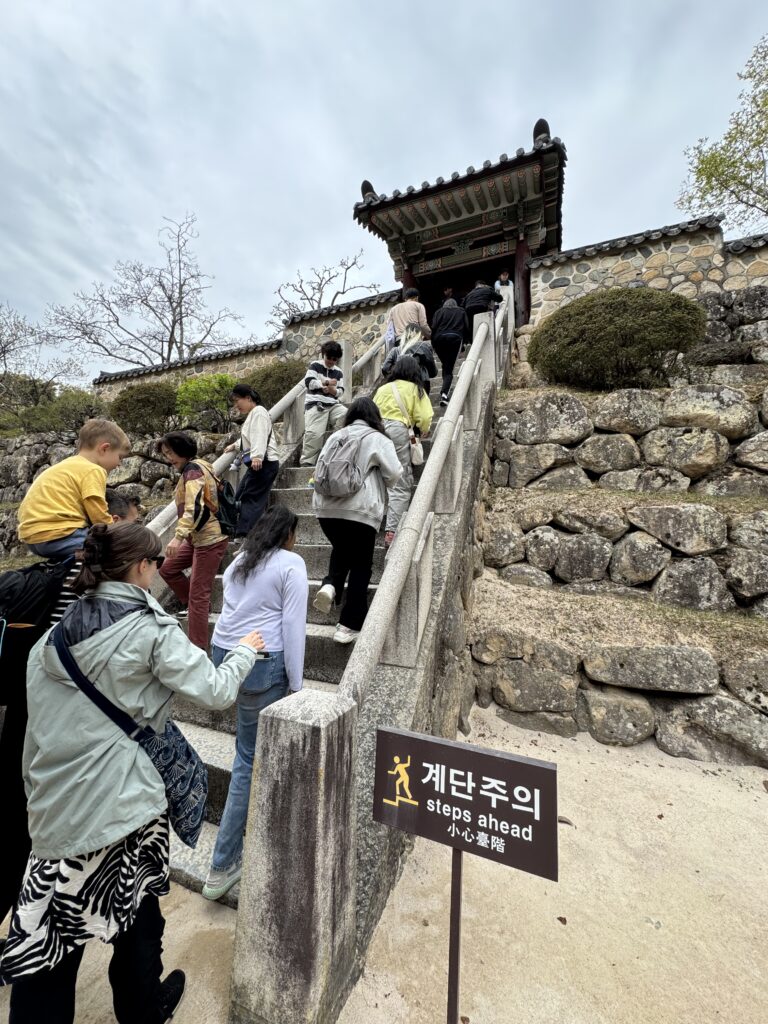
Second Stop: Gyo-dong, Gyeongju
Woljeonggyo Bridge
Woljeonggyo Bridge in Gyeongju, South Korea, is a stunning wooden bridge that crosses a peaceful river. Known as the “Bridge of Moonlight Love,” it creates a romantic scene of lovers walking under the moon. Built during the Silla Dynasty, this bridge represents connection and beauty, making it a favorite spot for history enthusiasts and couples looking for a charming walk.
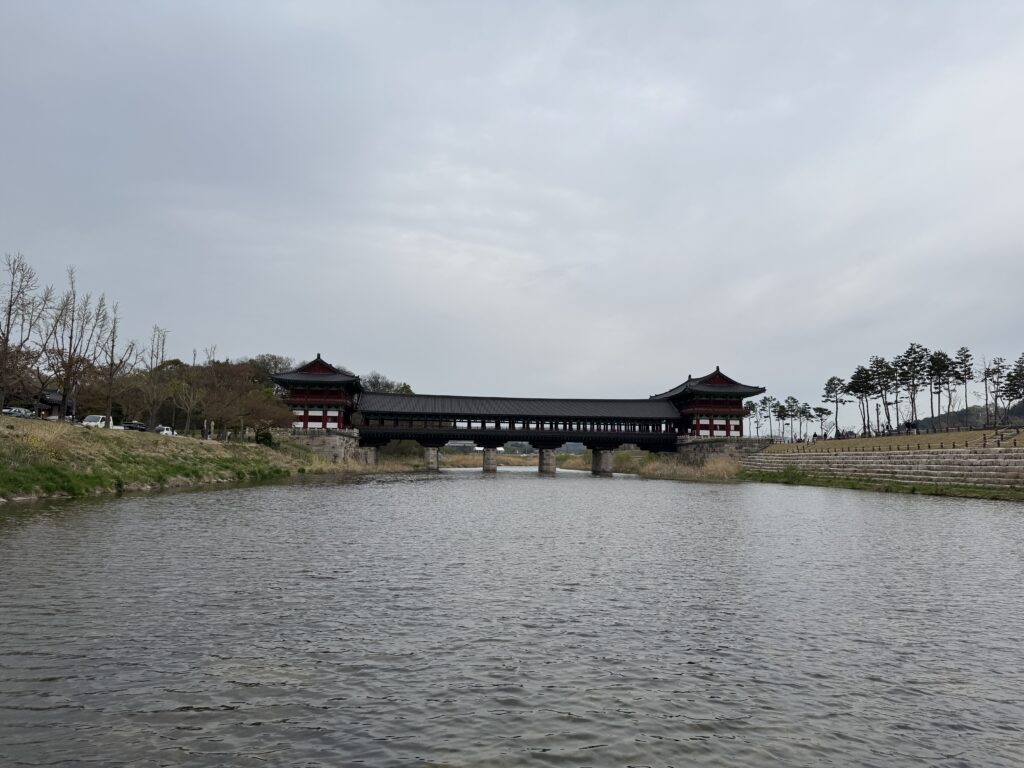
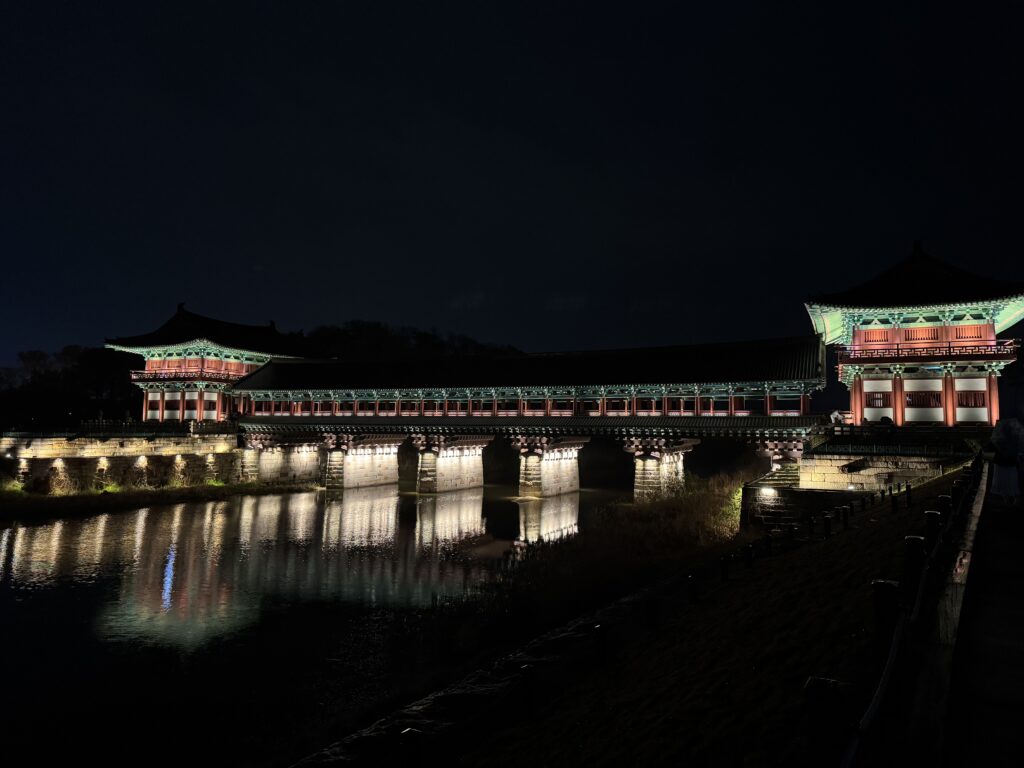
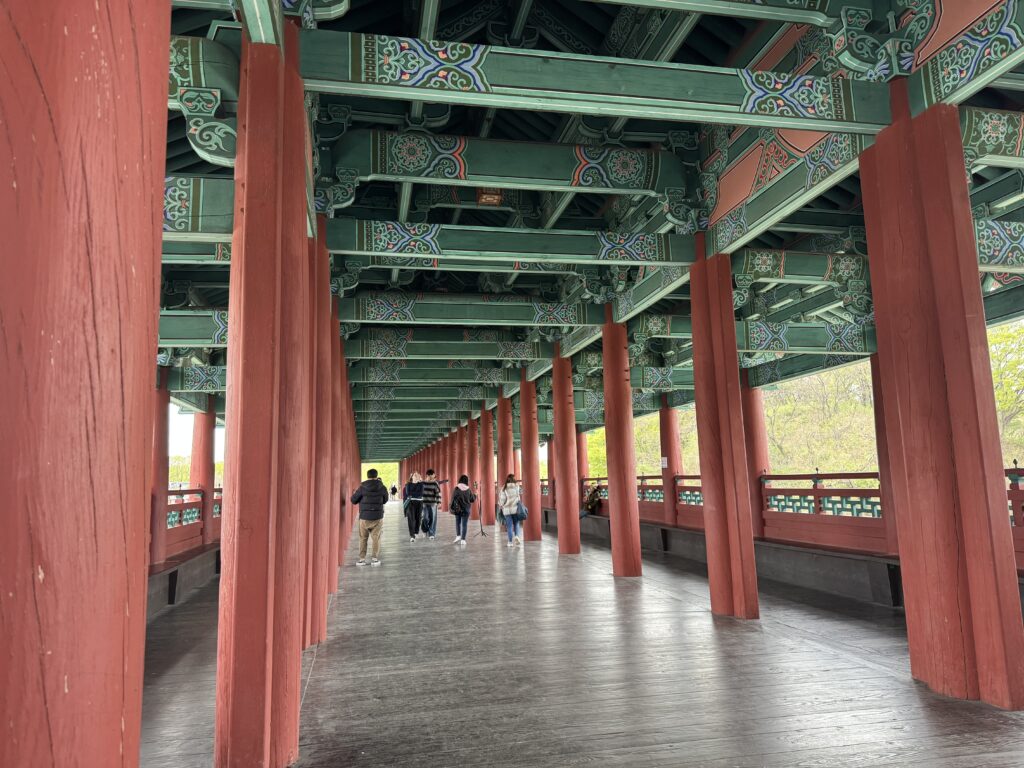
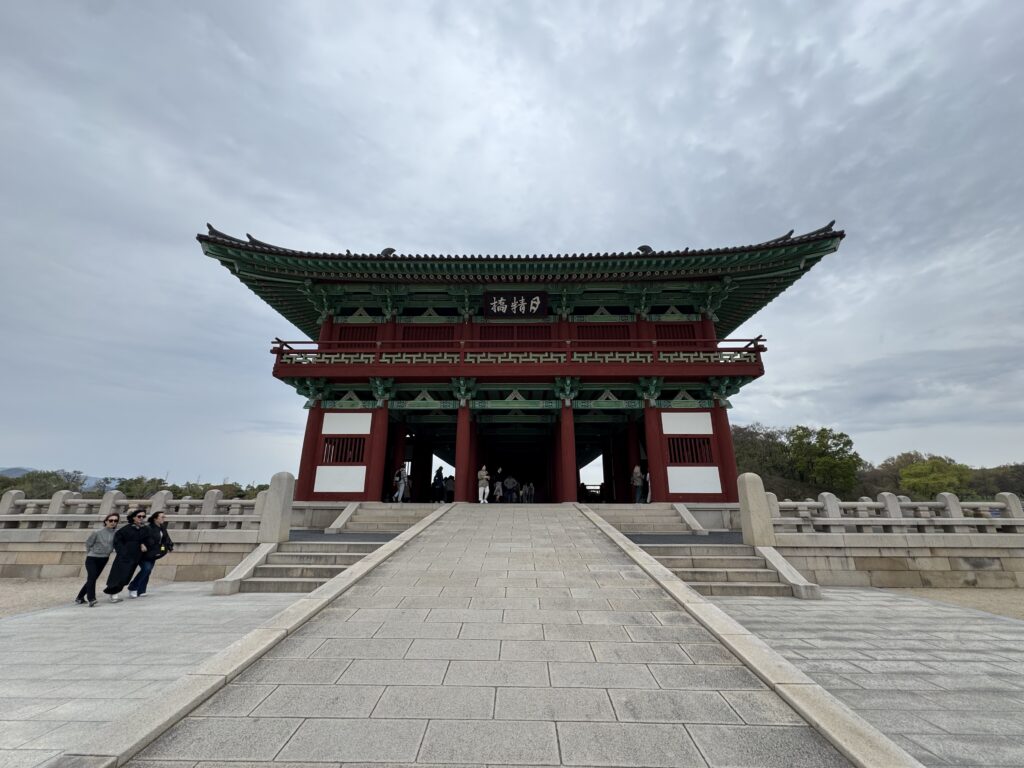
Choe Jun’s House
Choe Jun’s House in Gyeongju, South Korea, is a great example of a traditional Korean hanok home. Built during the late Joseon Dynasty, it once belonged to Choe Jun, a wealthy and important figure. The house showcases beautiful wooden structures, classic tiled roofs, and calm courtyards that represent Confucian values like balance, modesty, and harmony with nature. Today, it’s a cultural gem where visitors can step back in time and experience Korea’s rich history and peaceful way of life.

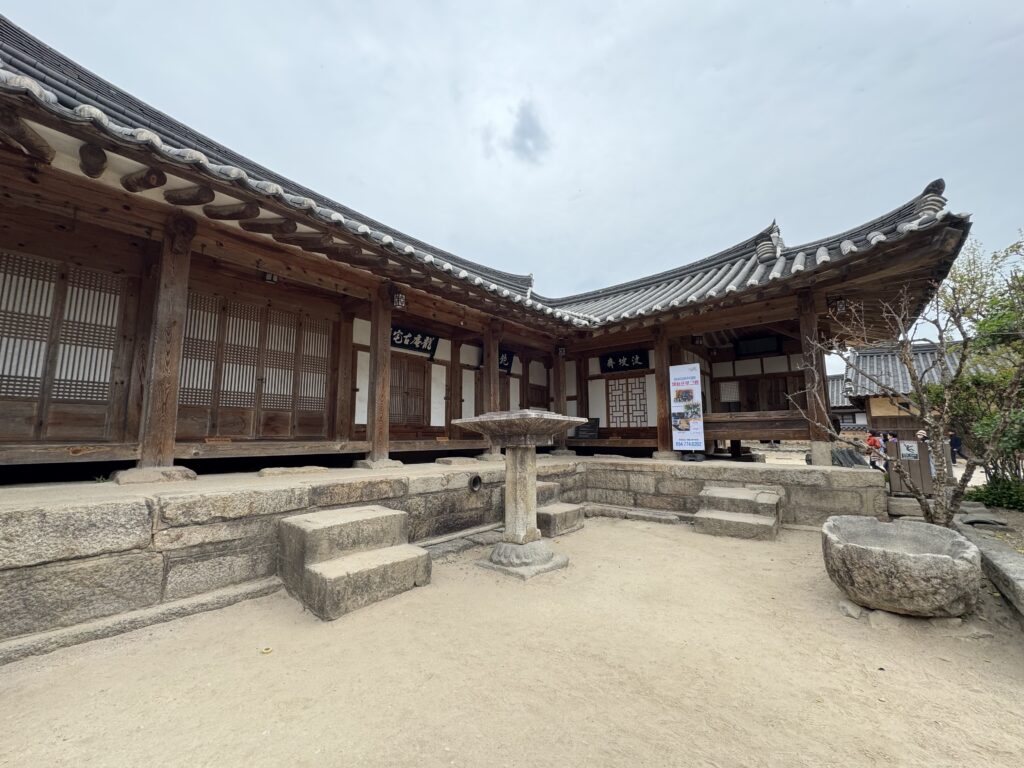
Third Stop: Daereungwon
Daereungwon in Gyeongju is a large park with ancient royal tombs from the Silla Dynasty. The tombs look like grassy hills, creating a calm and peaceful atmosphere. For just 3,000 won, visitors can explore one of the tombs, Cheonmachong, and see how the royals were buried with their treasures. The hill shape of the tombs represents a connection between heaven and earth, protecting the spirits of kings and nobles.
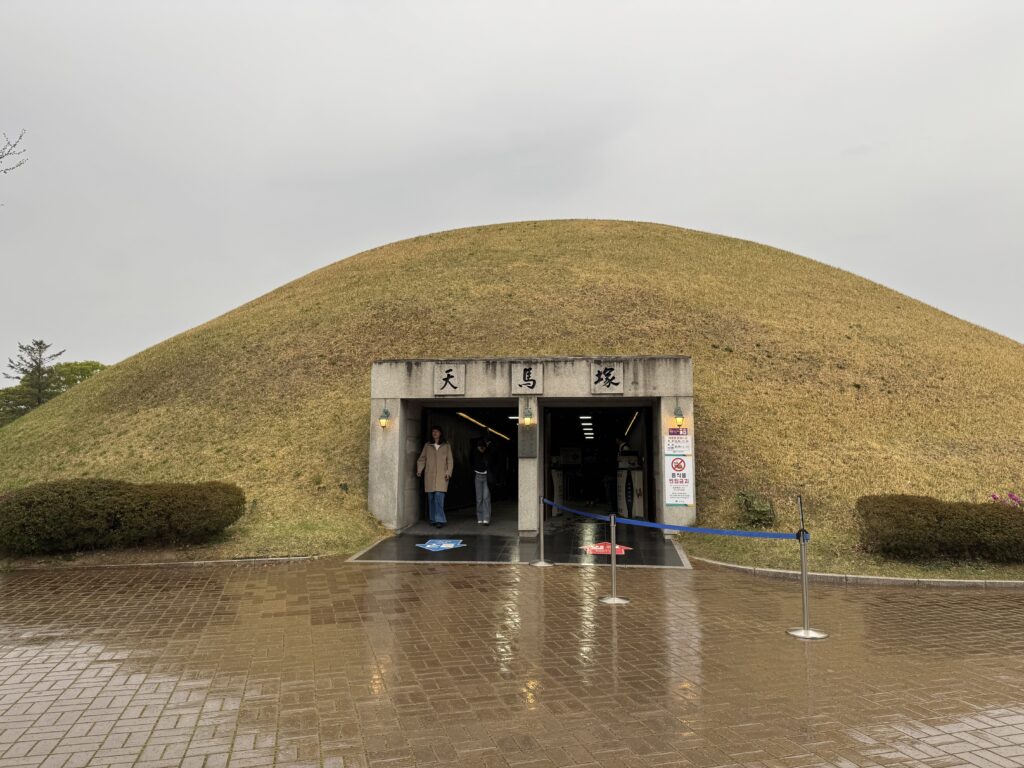
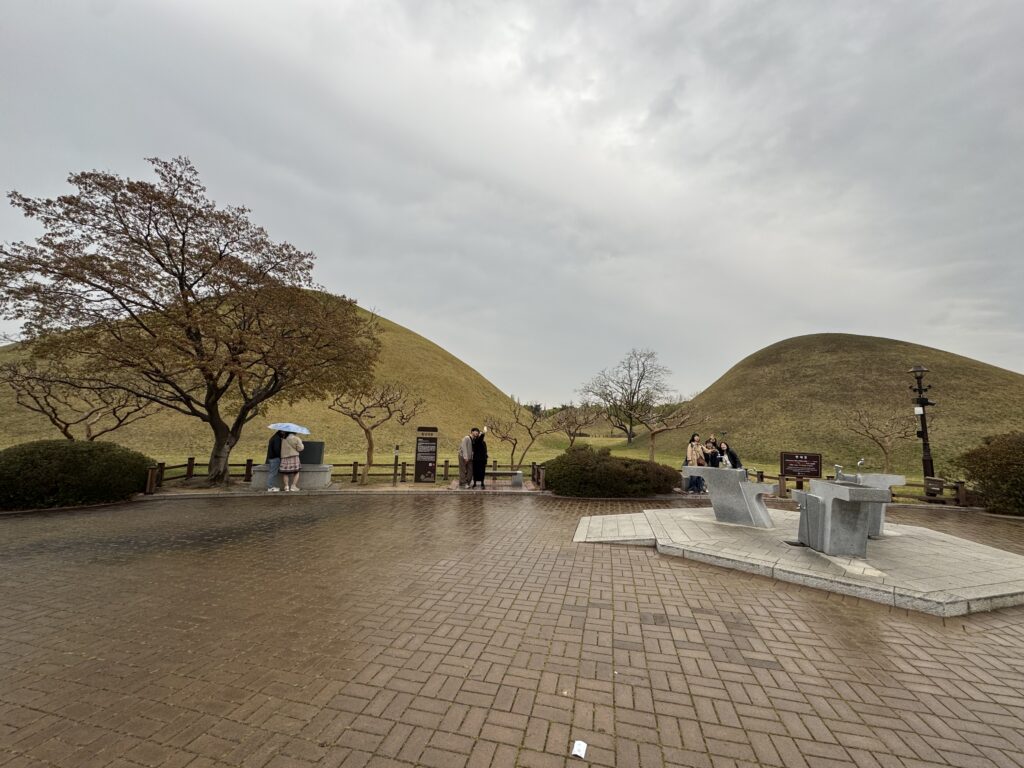
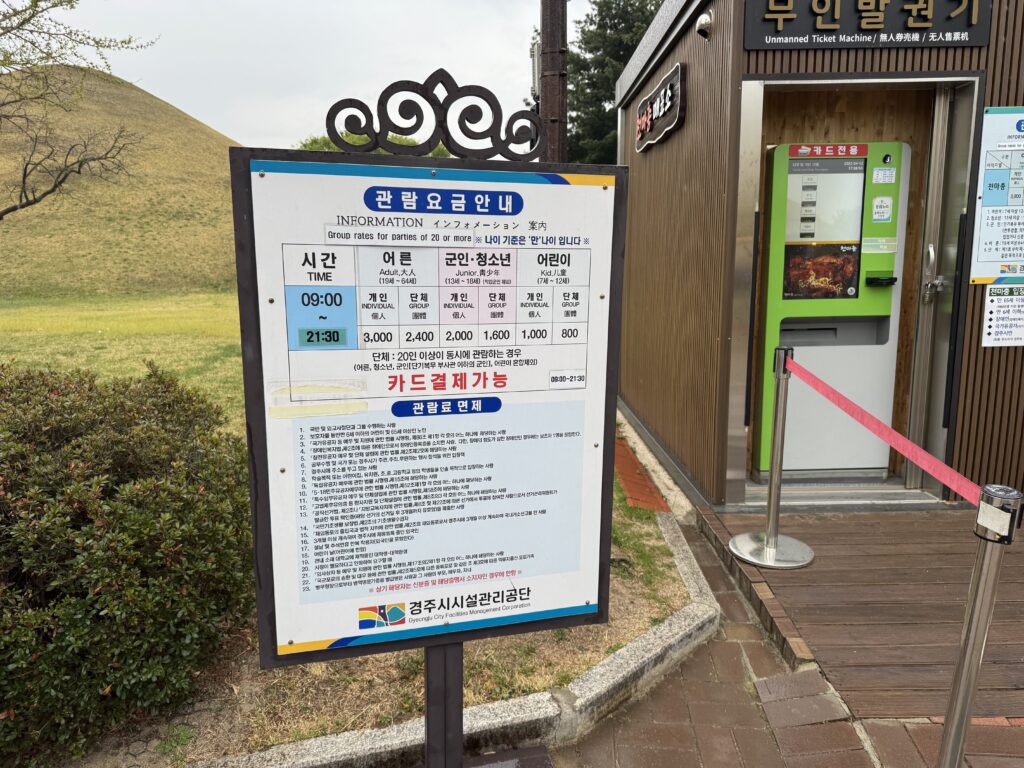
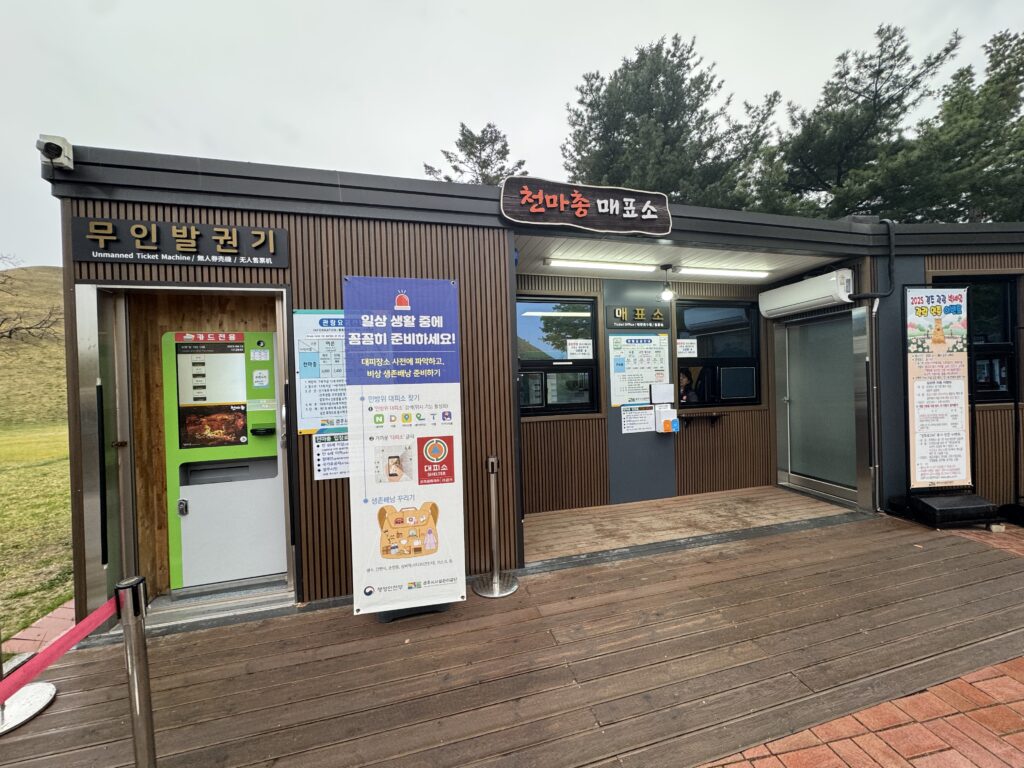
Hwangnidan-gil
Hwangnidan-gil, located near the tombs, is a lively street full of delicious food and unique shops. While it might not have the same photogenic charm as other areas, it’s a great place to enjoy local dishes and shop for one-of-a-kind items. Perfect for casual dining and exploring, it’s an ideal spot to spend a relaxing time in Gyeongju.
Donggung Palace and Woll Pond
Donggung Palace and Woll Pond in Gyeongju, South Korea, offer a peek into the country’s royal past. Once a retreat for the crown prince of the Silla Dynasty, the palace is surrounded by the peaceful Woll Pond. The reflection of the palace in the calm water creates a beautiful and serene scene. At night, the illuminated palace adds a magical touch, making it an unforgettable experience that takes you back in time.
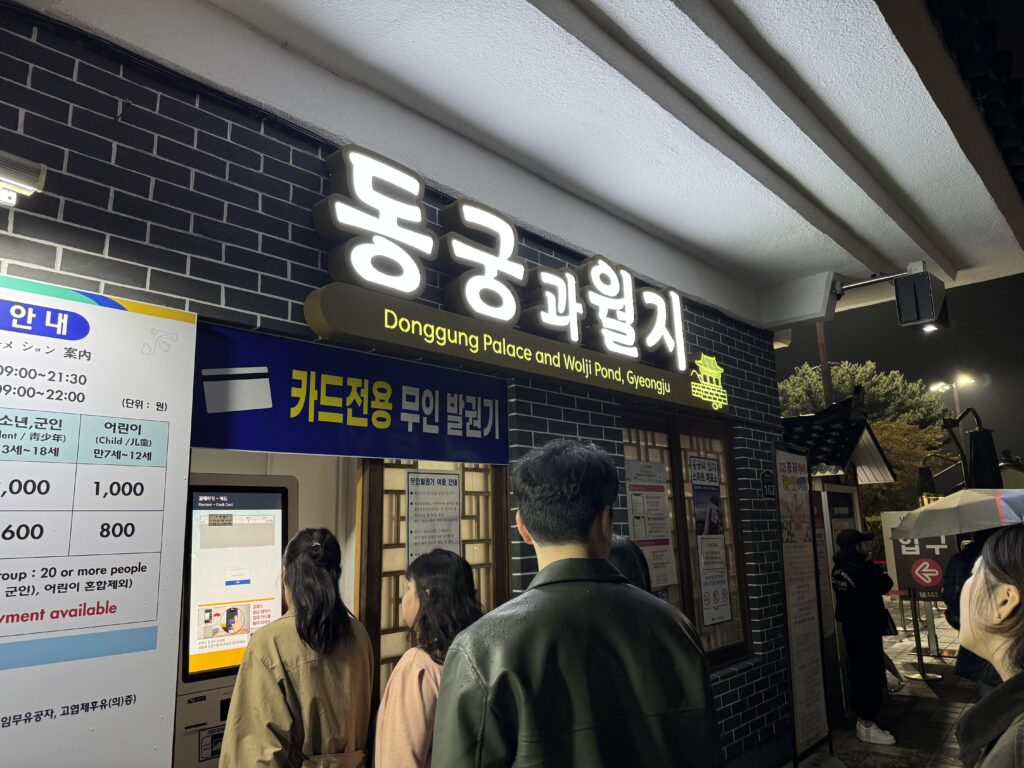
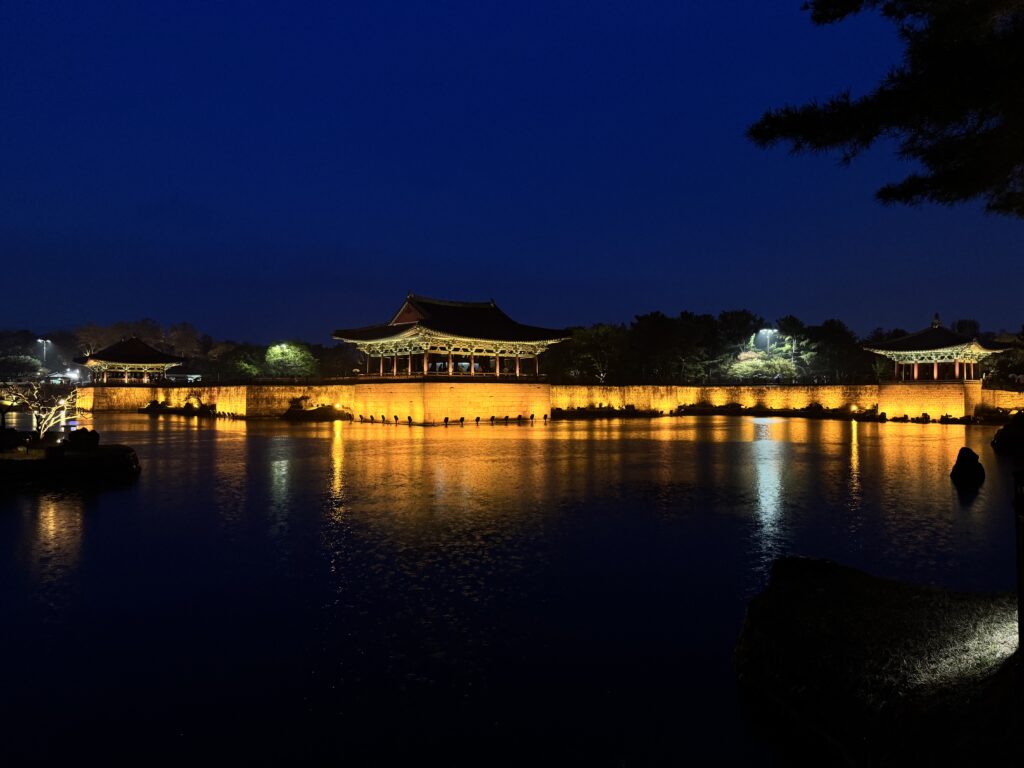
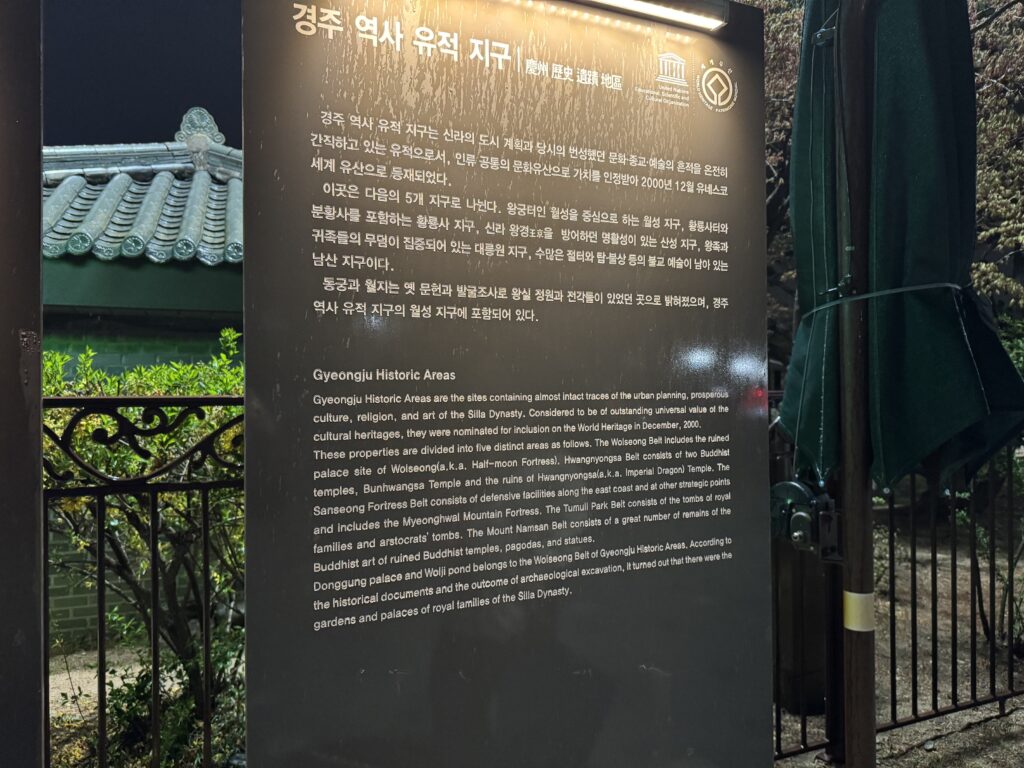
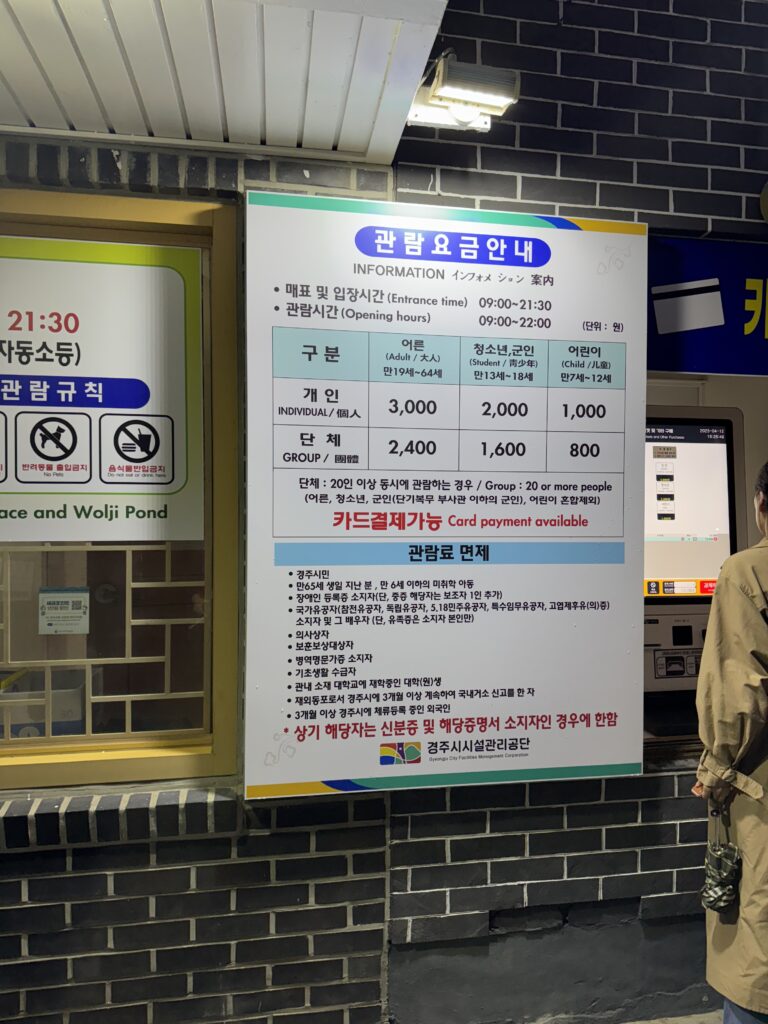
A day trip from Busan to Gyeongju is the perfect mix of history, culture, and nature. Visit ancient temples, royal tombs, and the peaceful Donggung Palace and Woll Pond. Gyeongju is a city full of Korea’s rich history and beautiful sights. Whether you’re exploring UNESCO World Heritage sites or enjoying the calm surroundings, Gyeongju offers a memorable experience. In just one day, you can discover the heart of South Korea’s past.

